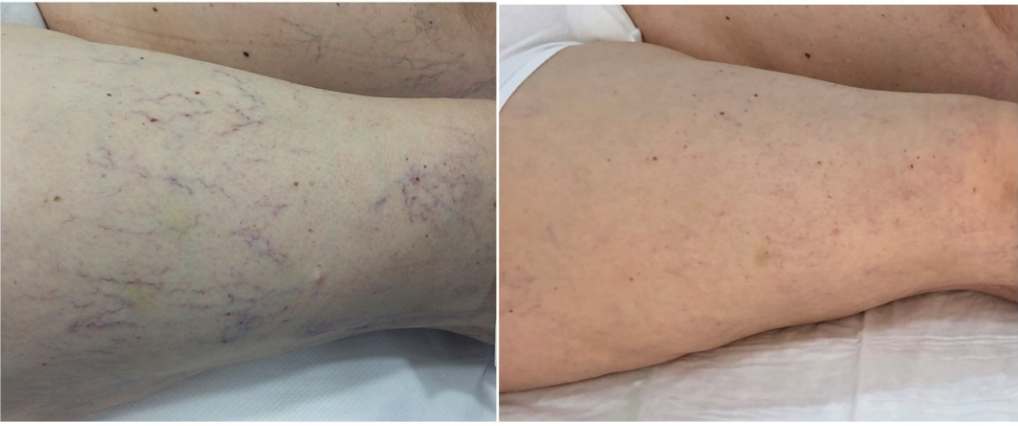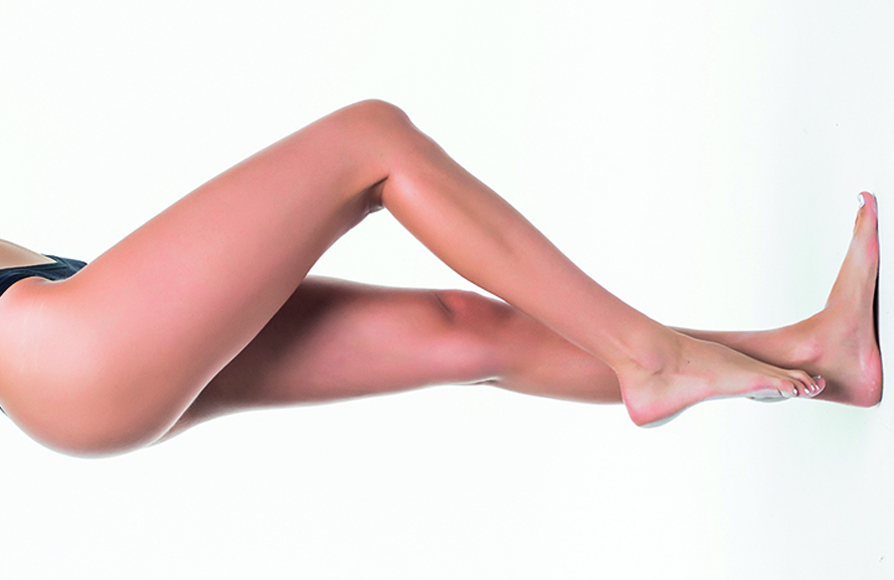What are spider veins?
Spider veins, also called telangiectasias or varicose veins, although not considered as «varicose veins» by many patients, do represent one of the manifestations of CHRONIC VENOUS INSUFFICIENCY. They are class 1 of the CEAP classification. They are PATHOLOGICAL veins that should not be seen.
It is true that they do not usually cause complications, unless they are very abundant and are associated with heaviness and leg pain. Also in extreme cases, these telangiectasias can cause small bleedings. They are generally associated with RETICULAR VEINS, which are the slightly deeper, greenish vein branches that tend to «feed» the more visible spider veins. Spider veins can also occur on the décolleté, face or even breasts.
What does the treatment consist of?
The most widespread and effective treatment modality is SCLEROTHERAPY. Sclerotherapy consists of the injection of a substance that is somewhat irritating to an internal layer of the vein, which causes the vein to occlude and annul. There are various types of sclerosing substances. At Delarra Vascular, we handle all of them and prefer to adapt the sclerosing substance to each case. It is carried out by injections along the veins, every few centimetres.
During the sclerotherapy procedure, short and multiple injections must be made, so that we achieve the best distribution of the product, with the smoothest and most uniform effect. As we say, it is like painting with varnish, and it is preferable to do many light coats. There are possible adverse effects as in any type of treatment.
See below in the dedicated section. We want our patients to be well informed.
THERE ARE TWO VARIETIES OF TREATMENT, WHICH AT DELARRA WE ARE PARTICULARLY PROUD OF.
CRYO SCLEROTHERAPY: Cryo sclerotherapy involves the injection of a mild sclerosing substance (to avoid adverse effects such as pigmentation) but is injected at a very low temperature (-40°C). The sum of these factors enhances the effect, avoiding unwanted effects as much as possible. The cold also causes a spasm of the vein (the vein becomes smaller) and controls excessive swelling. All this makes the effects IMPROVABLE FROM AN AESTHETIC POINT OF VIEW. All this requires special equipment.
LASER-SCLEROTHERAPY: Combined transcutaneous laser sclerotherapy is far superior to conventional sclerotherapy (not cryo sclerotherapy). Initially the spider veins are punctured, and a small amount of sclerosant is injected (different types are used). When the sclerosant is injected, the vein takes on a very reddish colour, which increases its effectiveness thanks to the mechanism of action of the laser.






